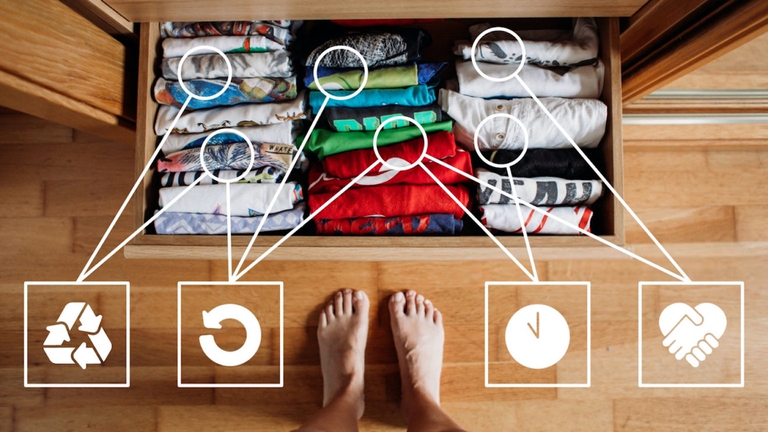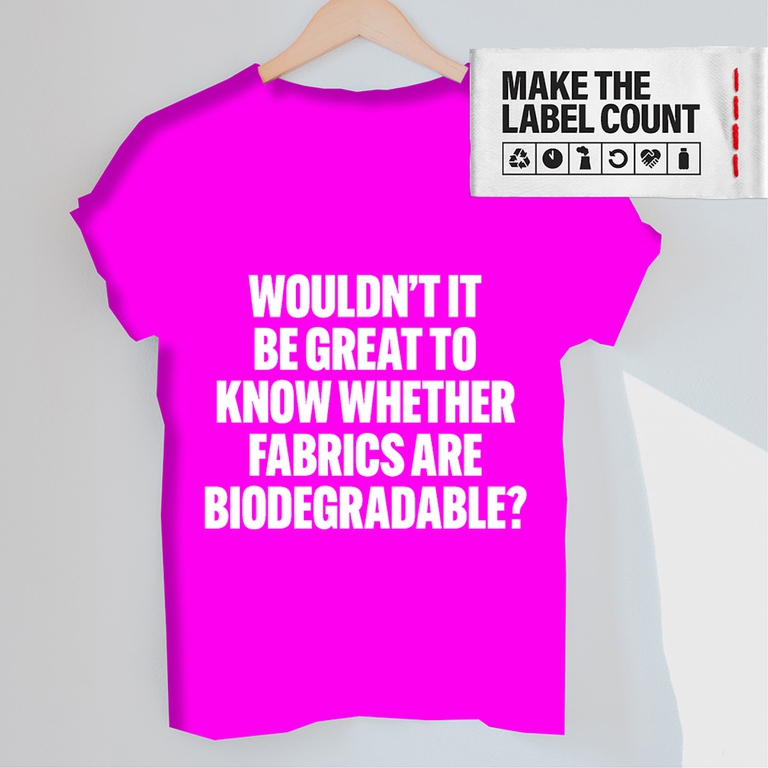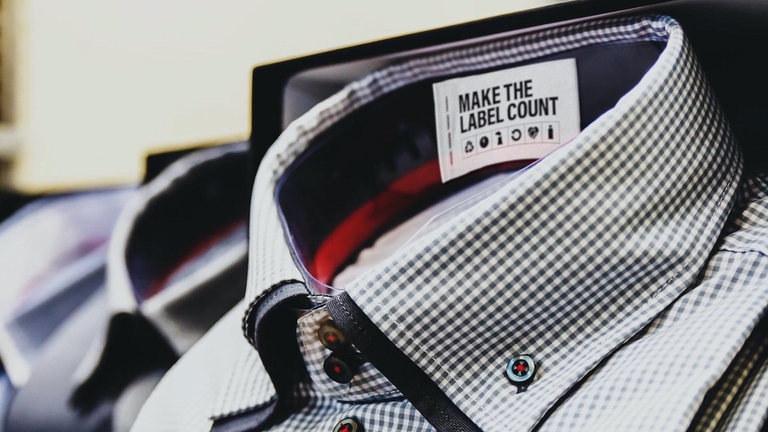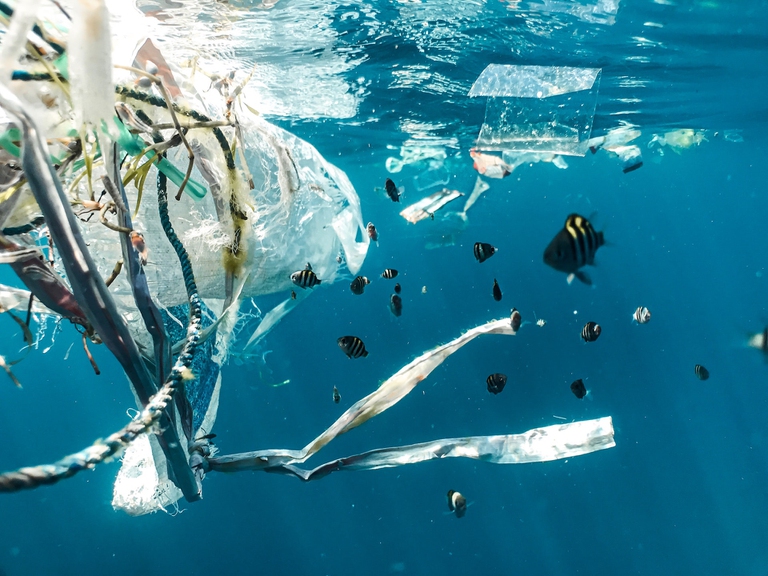https://www.lifegate.it/importanza-etichetta-tessile-contro-greenwashing
- |
- Many fashion houses do not hesitate to present their garments as environmentally friendly.
- Often, however, the statements on the label do not correspond to reality.
- To counter this phenomenon of greenwashing, the Make the label count campaign was born.
Clothes and accessories labels:in half the cases, they are examples of greenwashing.Every year the European Commission carries out one website screening, called sweep, to identify possible violations of EU consumer law in online markets.In 2021 this investigation focused specifically on identifying greenwashing:it turned out that in 42 percent of cases the claims on the label were exaggerated, false or misleading and which could potentially qualify as unfair commercial practices under EU rules.

The phenomenon of green bombing
If in the food sector labeling is not only regulated, but also now required by the consumer, when it comes to textiles the issue still remains murky.Net of the composition of clothes and accessories, currently vague phrases often appear on the label, most often thought of with the precise purpose of confusing the consumer or even deceive him because today, put in simple terms, sustainability pays.
Attention to the sustainability of purchasing choices is now a topic on the agenda for many consumers, Gen Z in the lead which, according to a report released by Forbes, is willing to spend 10 percent more on products it identifies as sustainable.This percentage clearly frames the problem:to be green today it means being able to charge more for your products.And although in textiles there are still more doubts than certainties about what can or cannot be defined as eco-compatible - the studies on this matter are, after all, recent -, many brands do not hesitate to present their products as such.The result is that today we come constantly bombarded by messages claiming ethical and ecological credentials even when this is in no way supported by the facts.

Incomplete labels and how to recognize them
The current labeling method adopted in the European Union focuses particularly on providing indications regarding thecarbon footprint of products because it is based on a type of indicator, the Pef (Product environmental footprint) which was adopted by European Commission in 2013 and which evaluates the environmental impact of a product from the point of view of emissions, but does not make any distinction, for example, between natural fibers and synthetic fibres, does not take into account the pollution deriving from microplastics, durability or recyclability of a garment.
Here, with the aim of demanding clarity in the labeling methodology, it was born Make the label count, an international coalition of producers of natural fibres and individual citizens animated by a common intent:ask and demand one correct labeling of garments.The coalition launched a campaign aimed mainly at European governance:the Union is in fact taking on a leadership role in the ecological transformation of textiles with a process that began in 2020 and is determined to mark a watershed in redesigning the textile industry.
But what are the fundamental elements that should be present on the label to allow consumers to make informed choices?We asked Dalena White, spokesperson for the campaign Make the label count and general secretary ofInternational wool textile organisation.“First, the label should inform consumers about the full impact of the product, from the acquisition of raw materials or natural resources to final disposal.”

What are the main critical issues to be resolved regarding labelling?
Textile items should come with warnings, as is done with cigarettes:for example, it would be necessary to warn if they contain fibers derived from crude oil (i.e. a limited and polluting resource) and provide assessments of the entire supply chain, including the working practices used and the socio-economic impacts of the fibers used to create the finished garment, all aspects which to date are not included in regular Lca (Life cycle assessment) studies.What we tend to do in textiles is give easy answers;the entire life cycle of the product and the possibilities of use of the garment itself are difficult to take into consideration.
What kind of indications can be misleading?
One above all:fabrics that contain fibers obtained from recycled plastic cannot be defined as sustainable as those made with natural fibres.Yet, they are often presented as more environmentally friendly products.Synthetic fibers already the result of a recycling process are no longer recyclable, unlike natural fibres, and moreover they release microplastics into the environment with each wash.
There should therefore be some sort of on the label warning on the fact that certain fibers release microplastics and on the recyclability of the garments?
It would be very important:especially for the textile industry, because the life cycle of products, especially fast fashion, has accelerated the disposal of clothing made with synthetic fibers which, translated, means a huge waste of plastic.If recycling is at the forefront of European Union policies, an indicator on whether textile products are recyclable or not should be present on labels.The issue of microplastics is equally important:in its current form, the PEF method does not adequately reflect EU considerations regarding sustainability, circularity and the fight against plastic waste pollution.Still:the biodegradability or otherwise of the textile fibers that make up a garment should be an essential indication.

Among the aspects highlighted by the Make the label count campaign there is also the impact on the communities that support themselves by producing natural fibres.Why?
The adoption of the PEF methodology, which disadvantages natural fibres, will also have a negative impact on many vulnerable communities:farmers active in the production of natural fibers such as silk, wool, alpaca, mohair and cotton - we are talking about around 300 million people - depend on their animals for economic and food subsistence.We must be aware that there is no single magic fiber that will save us from the climate crisis, but it is important to focus on the fact that we must invest in the quality of textile fibers along the entire production chain and, once the finished product is in the our hands, we need to valorise it for as long as possible, repair it and recycle it.
